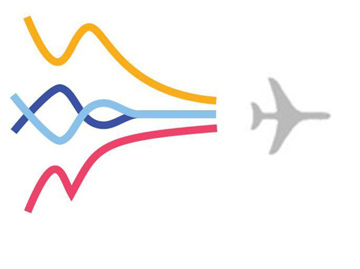
The ATSB’s first report of safety trends in Australian aviation reveals that while our skies remain safe, there are some shifting trends to watch.
Released today, the report summarises trends in Australian aviation from January to June 2014, comparing it to a five-year average, and what safety action was taken to address those trends. Trends will be updated every six months in this new ATSB analysis series.
Of note in this reporting period was an increase in the rate of airborne collision alert system warnings in high-capacity air transport operations over the past five quarters (since April-June 2013).
Most of these occurred in Sydney (12 of 28 in the past six months). All of these happened during independent visual approaches (IVAs) and 10 of them on runway 34L/R. An ATSB investigation into IVAs at Sydney Airport will be completed later this year.
While control issues with high-capacity aircraft are a low frequency occurrence, there was an increase in occurrences from January to June 2014. However, 10 of 16 of these were reported by one airline. The Fokker 100 was over-represented by fleet and activity size with five occurrences.
Loss of separation incidents involving low-capacity air transport also increase in January to June. Darwin and the Northern Territory in general were the most common location for these. Most were low risk although there was one high collision risk occurrence during this six-month period.
Safety trends in Australian aviation reveals that while our skies remain safe, there are some shifting trends to watch.
Dr Stuart Godley, Manager of ATSB Reporting & Analysis, said the ATSB would continue to monitor all safety trends.
“By maintaining a constant watch on aviation safety, we can effectively gauge trends and alert and advise industry of potential safety issues,” Dr Godley said.
Read the full report: Emerging trends in Australian aviation safety


